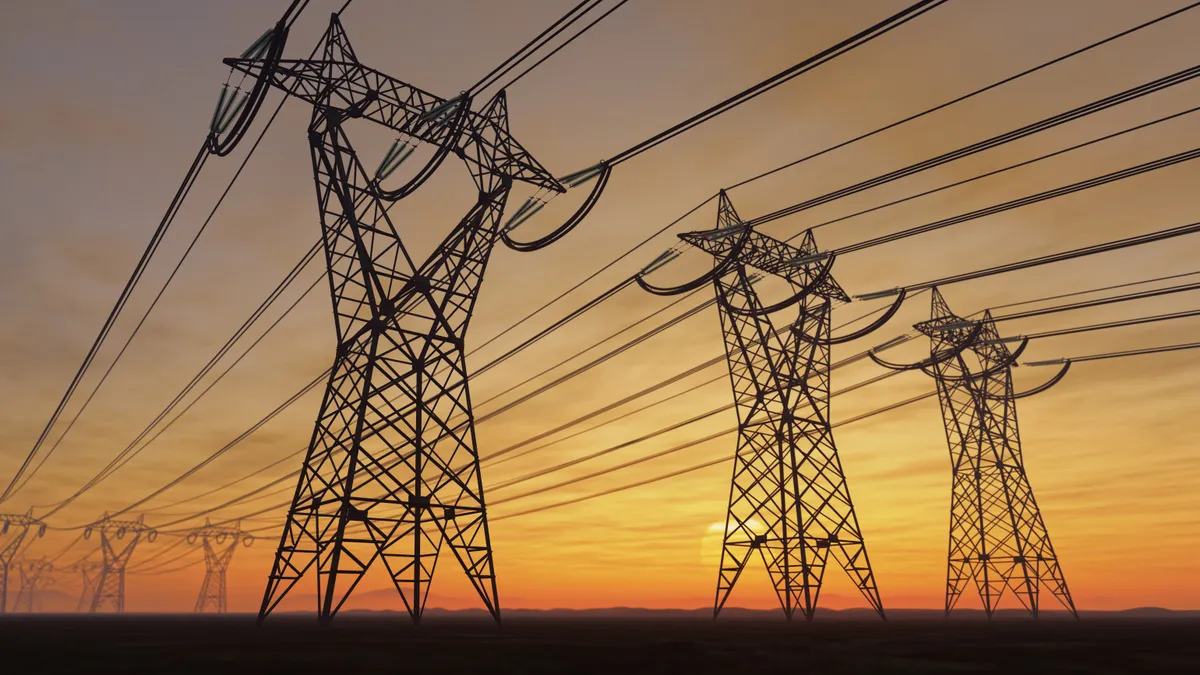Dive Brief:
- The ISO-RTO Council, which represents the major North American grid operators, Wednesday urged the Federal Energy Regulatory Commission to dismiss Invenergy’s petition asking the agency to hold a technical conference on cutting barriers to merchant interregional high-voltage direct-current transmission lines.
- FERC should instead address pending proposals at the agency on regional and interregional transmission planning, generation interconnection and cost allocation, the council said in comments to the agency.
- The National Association of Regulatory Utility Commissioners, renewable energy advocates, consumer groups and transmission companies such as Grid United and SOO Green supported holding a technical conference.
Dive Insight:
So far, FERC’s various transmission-related proposals have failed to consider issues surrounding merchant interregional HVDC transmission projects, Invenergy Transmission said in its Nov. 10 petition for a technical conference on the issue.
Merchant interregional HVDC transmission projects, which aren’t directly paid for by ratepayers, face numerous challenges, including a failure by grid operators to recognize their combined characteristics of generation, transmission, power flow control devices, and voltage and reactive power devices, according to Invenergy.
The need for regulatory certainty is pressing because interregional merchant HVDC systems support reliability and resilience, help ease backlogged interconnection queues, and deliver economical generation to consumers, said Invenergy, a Chicago-based company that is developing the $7 billion HVDC Grain Belt Express transmission project, set to run from Kansas to Indiana.
However, the ISO-RTO Council, representing nine independent system operators and regional transmission organizations, said FERC should address “threshold” issues through its pending rulemakings before taking up Invenergy’s technology-specific petition.
“The commission will provide industry-wide guidance on issues surrounding regional and interregional long-term transmission planning and generator interconnection, including, among other things, whether to account for extreme weather events and changing generation profiles,” the council said.
It is impractical for every technology or business plan to have an open generic proceeding requiring all industry stakeholders to participate and respond to new questions, especially when more generalized proceedings are pending, the council said.
In support of Invernergy’s petition, NARUC said it could be a vehicle to explore the effect, costs and usefulness of interregional merchant HVDC transmission, noting that increased transmission capacity between regions could improve grid reliability.
A conference would provide a forum to discuss HVDC transmission’s technological and market evolution, and what might permit further HVDC development, NARUC said.
Merchant HVDC projects face unique barriers, such as a lack of recognition of their ability to provide firm energy across the grid and a lack of a standardized process to interconnect to the grid, according to Advanced Energy United.
“Successful removal of barriers to interregional [merchant] HVDC projects could unlock significant cost savings and reliability and resilience benefits in regions across the country, allowing grid operators to export and import large quantities of power across the electric grid during severe weather and other emergencies,” the trade group said in support of Invenergy’s petition.
A lack of interregional transmission capacity has led to significant reliability and resiliency issues, particularly during severe weather, according to a coalition of groups, which include the Sustainable FERC Project, the Natural Resources Defense Council, the National Wildlife Federation, Western Resource Advocates, RMI, Earthjustice and the Sierra Club.
Some other supporters of having a technical conference include Electricity Consumers Resource Council, the Minnesota Public Utilities Commission, Grid United and SOO Green.
ICC approves Invenergy’s Grain Belt Express
Meanwhile, the Illinois Commerce Commission on Wednesday approved a permit for Invenergy’s Grain Belt Express project. With the ruling, Invenergy said it has secured initial siting approvals for the HVDC portion of the Grain Belt Express line by utility regulators in all states along the project’s route: Kansas, Missouri, Illinois and Indiana.
“Approving projects like Grain Belt Express could provide Illinois consumers with $4.3 billion in energy savings,” Citizens Utility Board Executive Director David Kolata said in a statement. “There is an urgent need to increase grid reliability and ease the burden of high power prices on consumers.”
Invenergy in January selected Siemens Energy to supply the HVDC technology for the first phase of the 800-mile, 5,000-MW project, which is set to begin construction in late 2024. The project is designed to deliver 2,500 MW from the Southwest Power Pool into the Midcontinent Independent System Operator market and the same amount to the PJM Interconnection, according to the ICC’s decision.















